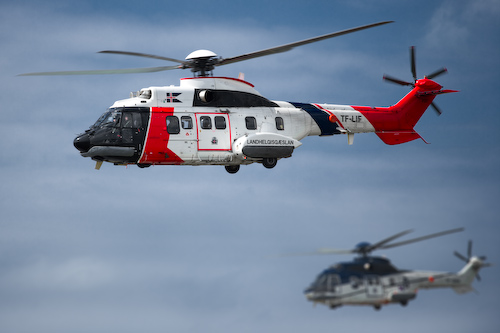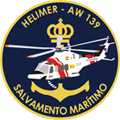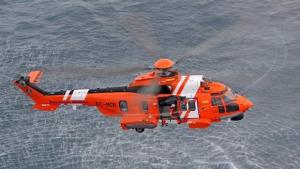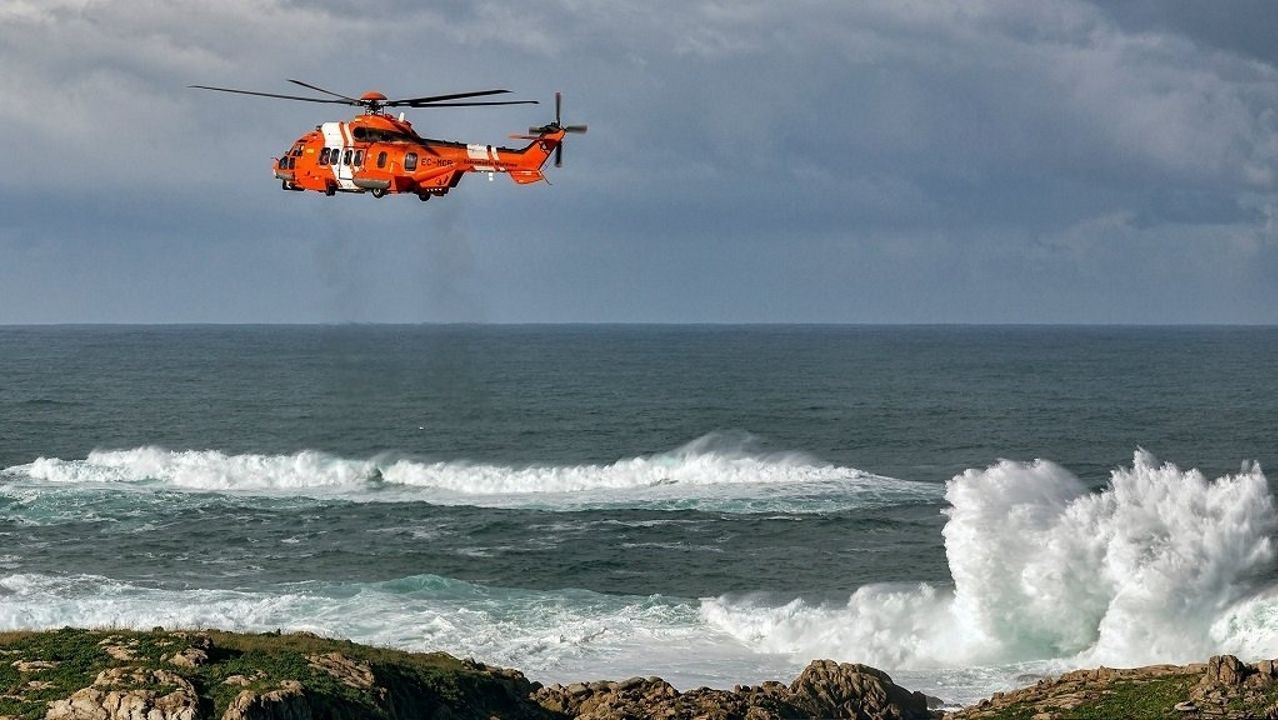The NAWSARH Project-1
Norway has successfully operated a public Search and Rescue Helicopter Service for more than 35 years. The Norwegian rescue responsibility area is huge where the ocean area is 6 times larger than the Norwegian mainland. In the harsh and sometimes hostile climate with the rugged Norwegian topography and extensive outdoor activities inland, in addition to the fisheries and offshore industry, the SAR service has proven its value as a safety measure for the society. The Sea King helicopters have been in service from the very beginning, and are now due for replacement. The planned replacement will take place by 2015. Norway is planning to acquire 10 – 12 new all weather search and rescue helicopters.
Iceland is also looking for new SAR helicopters due to the withdrawal of the American support in 2006. Iceland has the same natural challenges as Norway with high demands on the search and rescue services. Iceland is planning to acquire 3 new all weather search and rescue helicopters.
Based on this common requirement, Iceland and Norway have entered into an agreement to consider a joint procurement process.
Both countries consider a multi-mission helicopter capability to be cost-effective for society. In certain situations, the search and rescue helicopters’ ability to operate in hostile weather make them particularly well suited, or indeed the only option, for an air ambulance service. Therefore, the need for ambulance services will continue to be a fundamental requirement also in the future.
Norway has established a project team, the NAWSARH project (the Project), which will run the procedures for the future acquisition, based on future decision in accordance with Norwegian Quality Assurance regime for major investments. Iceland has joined the Project. There are high level liaison and coordination activities between Iceland and Norway.
Facts about the SAR Services in Norway
Rescue services can be defined as the publicly organised action that is effectuated to rescue people from death or injury following accidents or other dangerous situations both at sea and on land, and which are not maintained by specific organs or as a result of specific actions.
The Search and Rescue Helicopter Service is a dedicated resource within the publicly organised Search and Rescue Service, fully financed on the national budget and part of the Ministry of Justice’s portfolio. The Search and Rescue Services is operated by the 330 squadron of the Defence.
Prioritised missions for the Search and Rescue Helicopter Service is Search and Rescue (SAR), airborne ambulance and preventive Search and Rescue Services
Facts about the SAR Services in Iceland
The Icelandic Search and Rescue Region (SRR) is about 1.9 million km2, of which about 95% is over the adjacent North Atlantic sea areas. In Iceland the Ministry of Justice is responsible for Search and Rescue services over land and sea areas, and has for many years assigned the Icelandic Coast Guard the task of operating SAR aircraft, based at Reykjavík Airport. The ICG is currently operating for this purpose four Eurocopter SAR-helicopters, three Super Pumas and one Dauphin. Additionally, the ICG operates one Fokker F-27 maritime surveillance aircraft, which will be replaced my mid-2009 by a new Bombardier DHC-8-300 aircraft fitted with advanced surveillance equipment.
During the year 2007, the ICG SAR-helicopters were called out on 182 missions, an increase of 28% over the previous year. Of these 76 (42%) were over lower land areas, 54 (30%) were over higher terrain, and 52 (28%) were over the sea areas
The operating environment in Iceland and Norway, and their associated Search and Rescue Regions, is considered to be very similar. Both of these North Atlantic nations have similar ideas about the required mission capability and equipment status of new long-range SAR-helicopters.
Iceland has a firm requirement to purchase three new long-range state-of-the art SAR-helicopters. Thus, the Icelandic Ministry of Justice is formally participating in the ongoing Request for Information (RFI) process, and other preparatory processses, currently being planned by the Norwegian NAWSARH-project in Stavanger.
Overall Concept and Purpose (Norway)
Provide year-round safety for people in the SAR region at sea, in inaccessible terrain, and in difficult situations where other resources are insufficient.
- Procure up to 16 new SAR helicopters for the current six SAR operating bases in Norway
- With the aim of keeping minimum of one serviceable helicopter per base 24 hours a day all year round, with a target of 100% readiness.
- The reaction time is 15 minutes.
- The availability requirements will be measured at the interface between the Turnkey provision and the equipment and services performed in-house (by the Operator).
- The main objective is to enable the Operator to obtain the readiness targets, however taking into account life cycle cost effects.
- The final combination of the number of helicopters, availability requirements, and maintenance and logistics services, will hence be subject to negotiations.
Capabilities
The range and main capabilities for the Norwegian SAR helicopters have been summarised in four key objectives:
- To have the capacity to initiate rescue of 20 persons in distress at sea at any point within a range of 150 nautical miles directly out from the straight baseline within two hours and return with the rescuees to a safe place on land. In addition, they must be able to assist two persons at the far perimeter of the Norwegian SAR region with better effect than today. (That is about 400 NM out form the baseline. I believe the area of responsibility sector was recently extended to the 90 degrees N, which would add another 300 NM to this requirement!)
- To assist persons in distress on land and in inaccessible terrain, and in other emergency situations where other resources are insufficient, quickly and in a safe manner year-round. (Eg. OGE hover at 8 100 feet, operate down to about minus 50 degrees)
- To continue the present established practice to conduct air ambulance services, where the health service’s own helicopters are unsuitable.
- To carry out other missions of public importance (military missions, support to special police missions, specialised fire fighting, emergency relief, environmental protection, and other missions of public interest aimed at protecting assets or the environment).

Delivery of SAR helicopters and lifecycle support materials and services
The ILS solution will include all:
- life-cycle support logistics materials and
- services and
- some training and
- maintenance services, (not applicable for Iceland)
- during the implementation phase and for an envisaged duration of ten years
The procurement will seek out a Turnkey provider, with only one contractual interface between the Ministry and the chosen provider.
- Some assets (e.g. base facilities) and services (e.g. line maintenance) shall be provided or undertaken by the Ministry,
- Some assets and services will be made available to the Bidders for incorporation in the Turnkey solution if considered appropriate by the Bidder.
In-house assets and services:
- Operated by 330 sqd as today (Air Force)
- SAR operating bases as today (6 bases on the mainland)
- Line maintenance
Iceland
The Icelandic Government has decided to procure an initial order of
- one new long-range rescue helicopter
- with a purchase option of two more helicopters.
Iceland intends to procure, as far as it is feasible, the same helicopters as Norway, thereby achieving efficiency and economies of scale.
- Iceland will perform line and base maintenance in-house, and acquire other necessary services.

Regulatory framework (only Norway)
It is the Ministry’s objective that the procurement shall be open to both military and civil certified helicopters, and military and civil registration. It is thus the Ministry’s objective that the Candidate may freely choose what he considers most advantageous in order to meet the Ministry’s operational, functional and technical requirements.
The intended helicopter shall prove evidence that it will hold a civil EASA type certificate or military qualification from recognised authority at the latest when preferred bidder is selected.
- The Ministry intention is not to close the question of helicopter register until the time of selecting the preferred bidder, based on his best overall offer.
- Please note that in order to allow a change in the future register (i.e. to a civil register) it is required that operational flexibility in relation to SAR and air ambulance operations is upheld.
- Whether this is obtainable is pending clarifications from the MoD, CAA-N and EASA.
- Hence, the Ministry reserves the right to revisit the required regulatory regime as necessary due to EASAs response, or if otherwise required to do so in order to comply with the prerequisite of operational flexibility.
Options
The Options (6+2) will be considered called for:
- At Svalbard to replace the current SAR helicopters (Presently one AWSAR AS332L1/ one AS365N2)
- On the mainland Norway:
–in case of loss of a Helicopter,
–if the number of SAR Operating Bases at the Norwegian mainland should be increased in the future, or
–due to any other presently unforeseen or uncontrollable circumstance.
Iceland to replace existing SAR helicopters
The Options shall be valid for a maximum period equalling the length of the maintenance and logistics services.
Award Criteria
Following the negotiations, the contract will be awarded to the Bidder with the economically most advantageous offer, as further detailed in the ITT. The award criteria will be:
Award criteria and Weight
Performance/Quality - 48%
Price - 33%
Risk - 7%
Reliability of delivery - 12%
Status report 12th March 2009
NAWSARH project has recently finalized the intended demonstration program for aircraft as described in the Request for Information (RFI) chapter 11. The parties that responded to the RFI last year with their offer to give the project a demonstration of their aircraft products were:
- Navair with their V-22 Osprey
- Sikorsky with their S92
- Eurocopter with their EC725
- AgustaWestland with their AW101
- NHIndustries with their NH90 (TTH)
The demonstration has been conducted in line with the RFI, in the areas mission planning, range demonstration, search capabilities, autohover and pickup, handling, navigation, downwash, exhaust ingestion in cabin and cabin capacity. The project demonstration team consisted of a whole Sea King crew from the 330sqd as well as expert consultants from civil industry and participants from Iceland.
To be continued...






